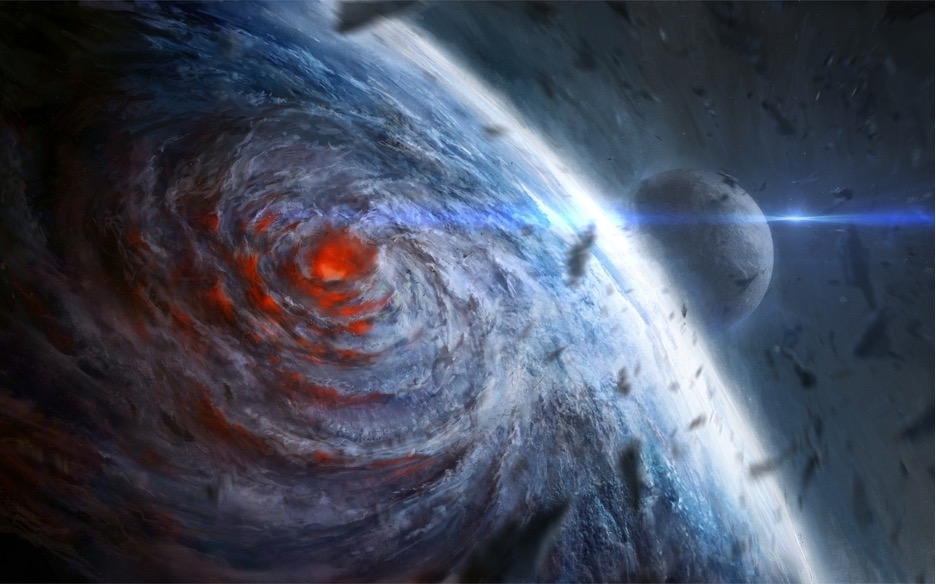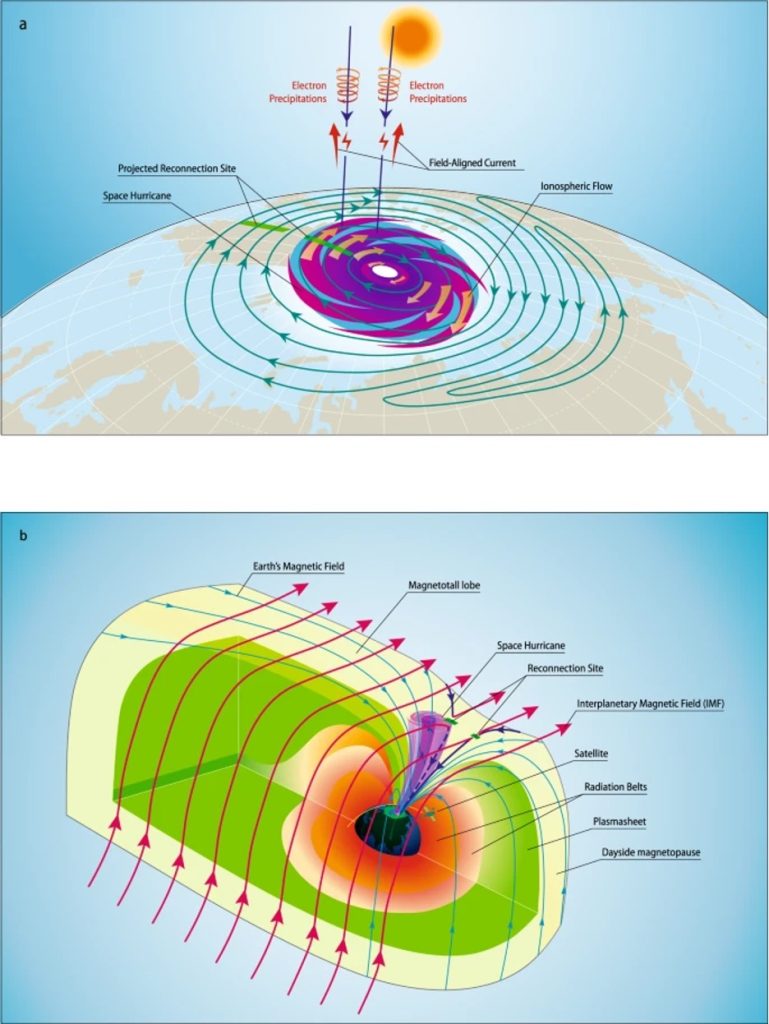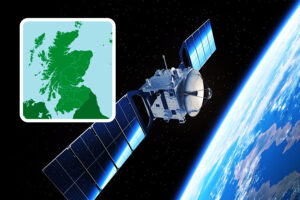Hostile swirl: what is a space hurricane, and how does it affect Earth?
28th Dec 2022
We know that a hurricane is a formidable natural phenomenon that can sweep entire cities off the face of the Earth. No wonder the name of this phenomenon traces back to the Indian god of fear, Huracan. Hurricanes usually occur in the tropics of the Atlantic or Pacific Ocean when the water surface is heated above 25 degrees Celsius. The eddy currents in the lower atmosphere raise a storm, and if its speed reaches 120 km / h, it turns into a monster called a “hurricane.” People have already learned to forecast hurricanes and minimise their damage. But more recently, scientists have found that something similar is also happening in space.
What is a space hurricane, how does it form, and whether it can damage Earth? You will get the answers in this article.
What is a space hurricane?
A space hurricane is a giant funnel-shaped spiral geomagnetic storm. Instead of wind and rain, it consists of charged electrons from the solar wind (a stream of helium-hydrogen plasma flowing from the Sun into space at a speed of 300 to 1,200 km/s)
Until now, a space hurricane was considered a theoretical event, although it was first observed in 2014 above the magnetic north pole. Four satellites flying over the area recorded a large patch of aurora about 600 miles across, pouring charged electrons into the upper atmosphere for eight hours. Its shape was very similar to a typical terrestrial hurricane. The funnel with a quiet “eye” in the centre was surrounded by numerous plasma sleeves, which rotated counterclockwise at breakneck speed — up to 4700 miles per hour.
A research group led by Shandong University in China decided to study this unusual phenomenon. Only seven years later, in March 2021, scientists published a report identifying this occurrence as a space plasma hurricane.
Where and how do space hurricanes form?
The research team’s highly accurate 3D model of the 2014 hurricane determined that the event occurred in the polar region of the ionosphere, between 50 and 500 miles above the Earth’s surface, where the northern lights usually form. Streams of charged particles of the solar wind started interacting with the Earth’s magnetic field, resulting in a vortex that outwardly resembles an earthly hurricane. Check out how it looks on the 3D model and on a scheme.
Unlike common space weather disturbances such as high-latitude daytime auroras (HiLDA), the space hurricane was observed under very calm geomagnetic conditions when the solar wind flow was slow and the interplanetary magnetic field (IMF) was northward, while a strictly southerly orientation was required to excite ordinary geo storms.
Even though this is the only space hurricane recorded in the Earth’s ionosphere so far, scientists believe that such phenomena can occur not only on Earth but also on any other planets, as long as these planets’ atmospheres have a magnetic field and a large amount of solar plasma.
Can you see a space hurricane?
Since this is a daytime aurora, space hurricane storms are unlikely to be visible to the naked eye because sunlight will interfere with observation. But according to NASA, you are more likely to see the phenomenon if you get close to the poles.
Space hurricane effects on Earth
Unlike conventional terrestrial hurricanes, which often result in the loss of property and lives due to heavy winds and flooding caused by rainfall and tsunamis, space hurricanes are not physically dangerous. They occur far above the Earth’s surface, and instead of water and wind, they release a mass of charged electrons. But space hurricanes can interfere with other things. For example, they can affect existing weather patterns, damage satellites in their path, disrupt radio and GPS systems, and even change the orbits of space debris at low altitudes, posing a growing danger to spacecraft.
Will a space hurricane hit The Earth in 2025?
Emissions of solar plasma can be dangerous for the Earth; here, everything depends on the amount of radiated energy and the strength of its impact on the geomagnetic field of the Earth. Scientists predict a big solar storm in 2025, threatening humanity with massive power outages, communication disruptions, and trillions of dollars in damage.
Whether such a disturbance will cause a space hurricane like the one recorded in 2014 is unknown. If solar particles from a coronal mass ejection reach Earth with a magnetic polarity opposite to that of its nearest pole, they will be attracted to each other, releasing energy throughout the planet. The damage will be minimised if the polarities are the same because they will repel each other. We will be able to confirm particles’ polarity only a few minutes before they reach the Earth. That is why scientists once again emphasise the importance of studying space weather. After all, this is the only way we can mitigate the consequences of these negative phenomena.







Thank you for your comment! It will be visible on the site after moderation.